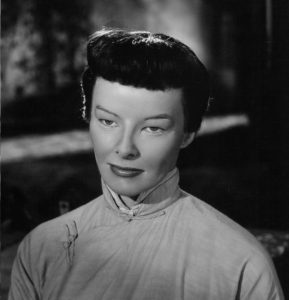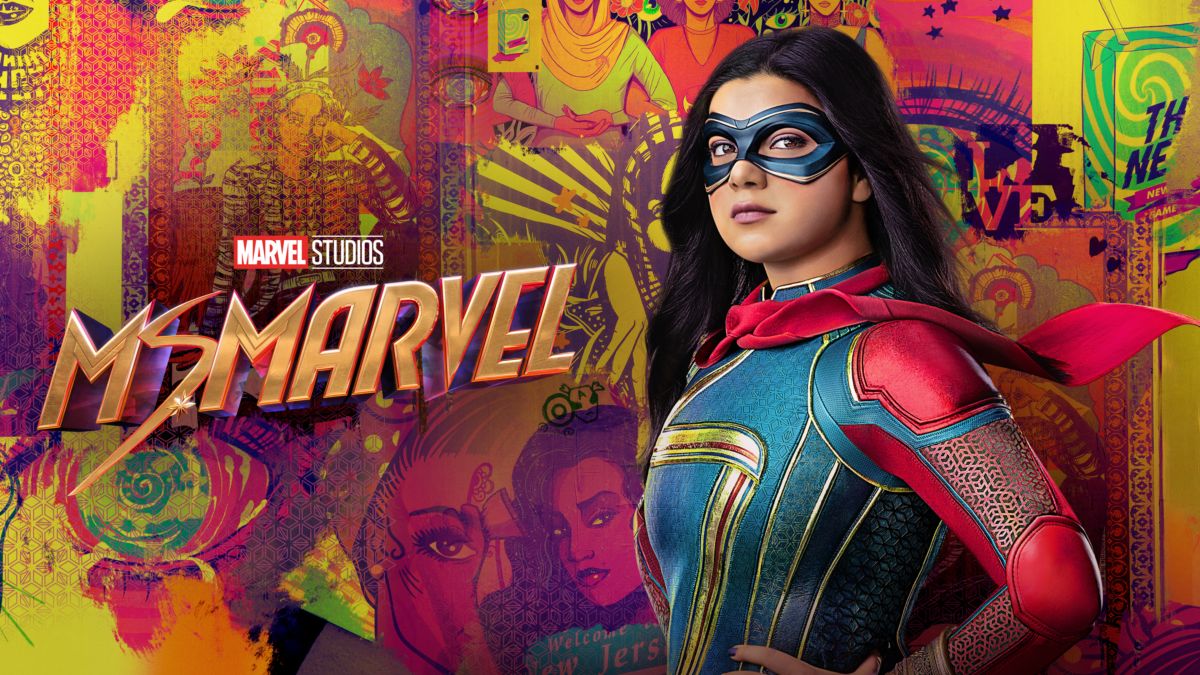
Gil Asakawa
Pop culture can be a mirror that reflects the issues and values of its time — for good and bad. For instance, Hollywood initially embraced Asians, and two of the early film era’s biggest stars were Los Angeles-born Chinese American Anna May Wong and Japanese-born Sessue Hayakawa.

Historically, Hollywood has cast White actors in Asian roles, applying “yellowface” makeup to alter their appearances. Pictured is Katharine Hepburn in 1944’s “Dragon Seed.”
But as the 20th century progressed, Hollywood began casting white actors with eyes taped back and “yellowface” makeup on their faces to play Asian roles. Some of our greatest actors, like Katharine Hepburn (1944’s “Dragon Seed”) and Marlon Brando (1956’s “Teahouse of the August Moon,” complete with a terrible racist accent), played Asians on camera.
I give a talk about the history of Asians in American pop culture, starting with Wong and Hayakawa, showing examples of yellowface, showing TV commercials from the 1960s to today (much better representAsian!) and I’m happy to report that we’re much better represented and much more visible — without accents, even — now than we were even just a generation ago.
And it continues to get better, as the U.S. undergoes the often-painful evolution sparked by the murder of George Floyd and the Black Lives Matter movement, as well as anti-Asian hate whose flames were fanned by the twice-impeached former president. Just this week, news reports covered a Montana bar owner who doubled down on calling Covid-19 the “C***k flu.” Really? Really, sad to say.
It’ll be interesting to see how anti-Asian hate manifests in Hollywood productions to come, but for now, pop culture is already showing more Asian characters and even lead characters, not just sidekicks.
Netflix leads the pack when it comes to showcasing Asians and Asian Americans. The streaming network had some huge Asian hits (“Squid Game,” the Korean mind-bending series about an insane “game”) and some duds (the unfairly canceled live-action remake of the sci-fi anime “Cowboy Bebop”) in 2021.
And it’s also had some quirky rom-coms about teenagers lately, including the “To All the Boys … ” movie trilogy starring Vietnam-born adoptee Lana Condor, and the series “Never Have I Ever,” produced by Mindy Kaling and starring Maitreyi Ramakrishnan, a young Tamil Canadian first-time actress.
We’ve enjoyed all these series and more on other networks, but I’m most charmed right now by Disney+’s “Ms. Marvel,” the teen spinoff of “Captain Marvel,” part of the expansive Marvel Comics Universe of franchises, starring 20-year-old, Pakistan-born and Canada-raised Iman Vellani as the young superhero-to-be.

Disney+’s recent TV series “Ms. Marvel” accurately portrays a South Asian family living in Jersey City while staying true to the story’s historical roots.
“Ms. Marvel” is a six-episode series that establishes the high school student Kamala Khan as a sassy daughter of a South Asian family living in Jersey City, across the river from Manhattan. Her parents (that is, her mom) have traditional values of hard work and good grades, making a good living and marrying a proper partner. It’s a scenario that many Asian American children of immigrant parents will instantly recognize and empathize with as well.
It’s great to become immersed in the Pakistani Muslim community of north Jersey and its culture, including mosque and family celebrations. Just as a viewer, I feel I’ve learned to appreciate Pakistanis more deeply than I had before, even though I have Pakistani friends and colleagues.
One of the most powerful lessons I learned from “Ms. Marvel” isn’t about superpowers (yes, here’s a spoiler alert) or magic amulets. It was the history lesson I got about how Pakistan was formed after Indian independence from the British colonialists in 1947.
When the British left, they partitioned South Asia into India (the large continent and country most of us might recognize, though we know nothing about it) and Pakistan, which was where Muslims were forced to migrate. Pakistan was divided into two small parts, and East Pakistan broke away in 1971 and became Bangladesh.
Too much history for you?
Why is it important to learn about the South Asian experience and the Pakistani partitioning? Because for decades, the history of the Japanese American experience — the wartime concentration camps and the heroism of the Nisei soldiers who fought in both Europe and the Pacific — went untold, only known within our community.
I love history, and I have focused much of my energy on learning my own community’s history. But there are important lessons to learn from all around the world.
As the JA experience becomes a little better known through pop culture (not just 1999’s “Snow Falling on Cedars” or 2018’s “The Terror: Infamy” horror series starring George Takei that was set in a JA wartime concentration camp, or even “Never Have I Ever,” which featured in one powerful episode the JA family experience of the mixed-race high school jock with whom the Indian main character has a crush), it’s worth keeping our eyes and mind open to the experience of other communities, especially other Asian communities.
I’m embarrassed to say I knew the term “Partition of India,” but I never knew how violent and uprooting it was for South Asian Muslims. It’s estimated that 200,000-2 million people died during this sudden, forced migration.
The narrative arc of “Ms. Marvel” includes the partition as Kamala is sent back in time by her powers and learns about the chaos and heartbreak of the era. And it does it in a way that’s not in-your-face or points fingers to find blame.
It simply adds context and complexity to the young Ms. Marvel’s character. I can hardly wait for future seasons and how
Kamala gets integrated into upcoming MCU blockbusters alongside Captain Marvel and other familiar superheroes.
But I’ll never forget the lessons that this series, and its creators, revealed to me about Kamala
Khan’s back story. Knowing it enriches my experience of watching the series again and helps me appreciate all South Asians and my Pakistani colleagues that much more.
Gil Asakawa is the author of “Tabemasho! Let’s Eat! The Tasty History of Japanese Food in America.”



